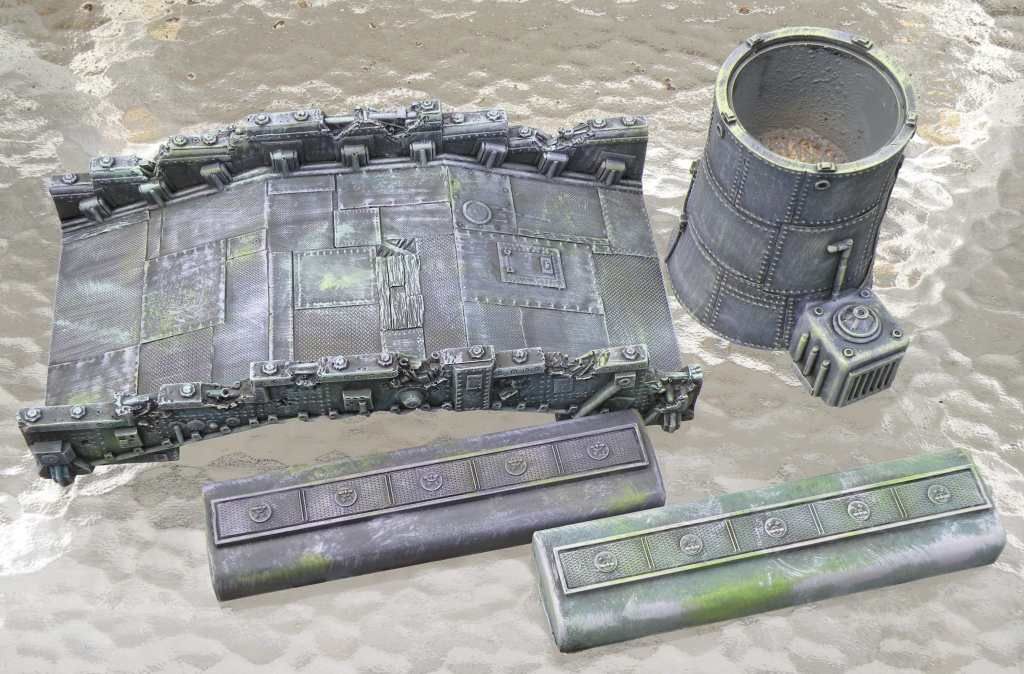heartserenade wrote:...how does HDR make your terrain more cinematic? It just makes it... weirdly colored.
fenrir1997 wrote:High Dynamic Range imagery is popular due to stark contrasts. Typically looks pretty cool in photography, but must be done properly if it wants to survive in our hobby.
As Fenrir says it must be done "properly", which means colors need to be toned down a bit from the photos I posted because they area bit overdone
and because of scale effect.
I'm probably not really capable articulating this as I don't have the art theory vocabulary. We are probably talking about more than one theory here as well.
The best examples I have seen other than the Mirkwood set are the red and blue flip flop pearl paints on the original movie Batmobile and Robocop's armor. Flip flop pearl paints cover the whole piece but the flip flop colors only show up where there are highlights from the studio or daylight lighting. Instead of a pure white highlight the camera will see a slightly blue or red highlight. We don't consciously see the red or blue in the film, but our minds know that the color is more interesting than it would be without the flip flop paint. What I'm trying to do is create a very visually interesting tabletop where the scenery is as interesting as the painted miniatures.
Mirkwood is a special case because of apparent inability of the 3D cameras or film to capture saturated colors. If the set was painted like a normal set, the colors in the final film would be dull and lifeless. I can't wait for the Hobbit to come out just to see how this scenery works in the film...
The real world as seen through a trained artist's eye has no black, no white and no true neutral grays. Every surface and every shadow is affected by its actual color AND by whatever light sources are in the area. If the lights are yellow, the shadows will have a purple hue. Most people don't see these subtle differences and it usually takes some training to see colors the way an artist does.
Instead of painting urban stuff gray with a dark gray/black wash followed by a couple of gray drybrushes, everything has not just color, but multiple colors. My house is painted a boring light gray, but when I look out the window at the deck, railings and overhead shade structure, I see ten different shades of gray depending on how deep the shadows are and whether the light source is reflected, indirect or direct. There are warmer grays where the fog dimmed sunshine hits the deck, greener grays where light is reflecting off of the oak trees and cooler grays in the deep shadows. If I were to paint a painting of this scene I would have to come up with a whole palette different grays to be able to capture the scene.
I'm sure that someone with a bit more art theory can make more sense out of my muddled writing and so now my cold addled brain is off to do some painting....
A couple of examples:
These were done a long time ago...


This is the current project (Necromunda board). These are not done yet but are progressing. A bit more progress with multi-color drybrushing. Still have multi-color washes, rust and a final drybrush to go.

